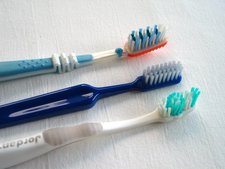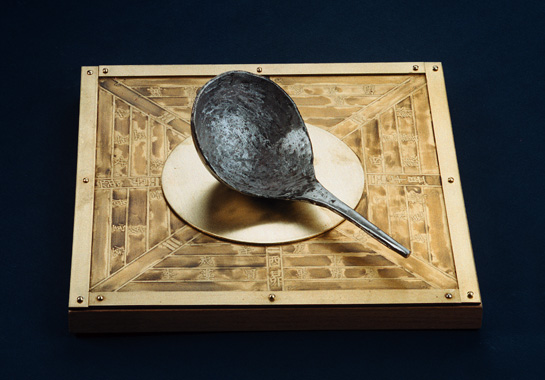Toothbrush

Three toothbrushes
History
Many traditional cultures around the world have always cleaned their teeth by rubbing twigs or pieces of wood against them since ancient times. Rubbing baking soda or chalk against the teeth was also common.
According to the American Dental Association, the first toothbrush was made in 1498 for an emperor in China who had hog bristles embedded in a bone handle. They were not common in the West until the 17th century, and became much more common in the 19th century. (A common older method of tooth cleaning, by rubbing with a piece of rag cloth, was in use in Europe at least since Roman times).William Addis of Clerkenwald, England, is credited with creating the first mass-produced toothbrush in 1780.
The first patent for a toothbrush was by H. N. Wadsworth in 1850 in the United States, but mass production of the product only started in 1885. The rather advanced design had a bone handle with holes bored into it for the Siberian Boar hair bristles. (Boar wasn't an ideal material; it retained bacteria, it didn't dry well, and the bristles would often fall out of the brush).It wasn't until World War II that the concept of brushing teeth really caught on in the US, in part due to the fact that it was part of American soldiers' regular daily duty to clean their teeth. It was a practice that they brought back to their home life after the conclusion of the war.
Natural bristles (from animal hair) were replaced by synthetic materials, usually nylon, by DuPont in 1938. The first nylon bristle toothbrush made with nylon yarn went on sale on February 24, 1938.
The first electric toothbrush, the Broxodent, was introduced by Squibb Pharmaceutical at the centennial of the American Dental Association in 1959.
In January 2003, the toothbrush was selected as the number one invention Americans could not live without, beating out the automobile, personal computer, cell phone, and microwave, according to the Lemelson-MIT Invention Index. [1]




























